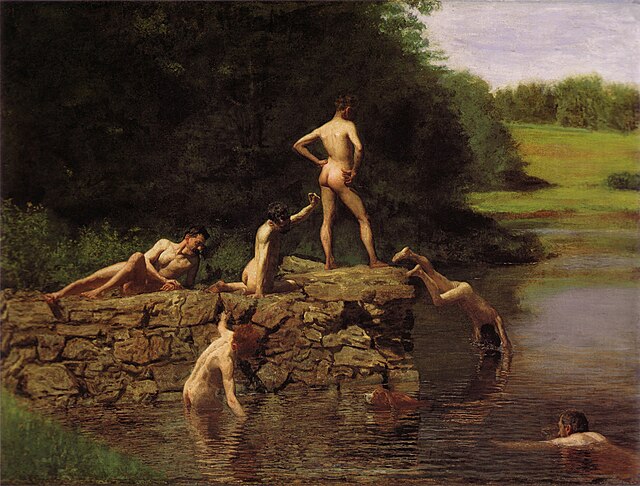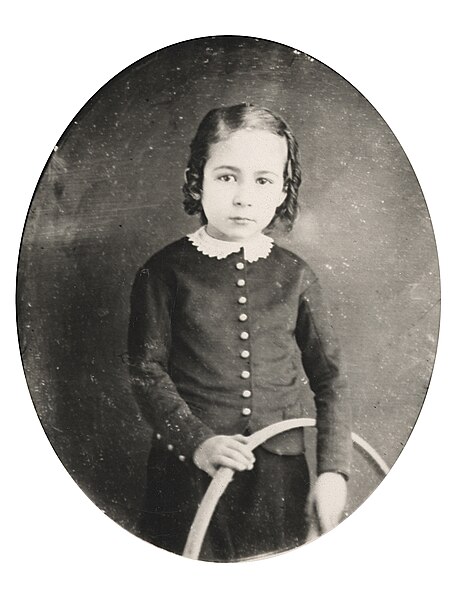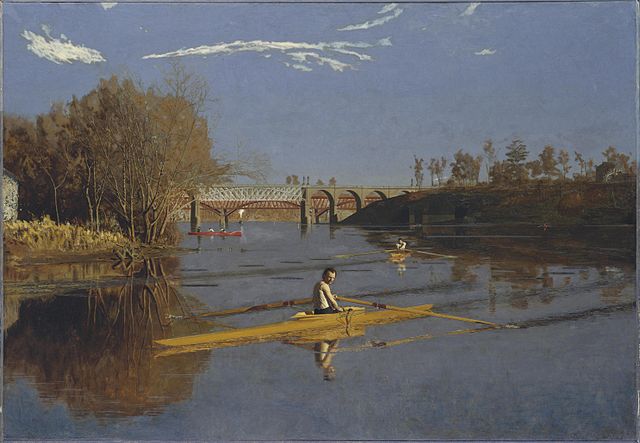The Swimming Hole is an 1884–85 painting by the American artist Thomas Eakins (1844–1916), Goodrich catalog #190, in the collection of the Amon Carter Museum of American Art in Fort Worth, Texas. Executed in oil on canvas, it depicts six men swimming naked in a lake, and is considered a masterpiece of American painting. According to art historian Doreen Bolger it is "perhaps Eakins' most accomplished rendition of the nude figure", and has been called "the most finely designed of all his outdoor pictures". Since the Renaissance, the human body has been considered both the basis of artists' training and the most challenging subject to depict in art, and the nude was the centerpiece of Eakins' teaching program at the Pennsylvania Academy of the Fine Arts. For Eakins, this picture was an opportunity to display his mastery of the human form.
The Swimming Hole
The Dying Gaul, Capitoline Museums, Rome. This Hellenistic work of the late third century BC is believed to have been a source for the reclining figure on the far left of the painting.
Frédéric Bazille. Scène d'été, 1869, oil on canvas, 62+1⁄4 × 62+1⁄2 in (158 × 159 cm), Fogg Art Museum, Cambridge, Massachusetts. Eakins may have seen this painting while studying in Paris.
Thomas Eakins. Arcadia, 1883, 38+5⁄8 × 45 in (98 × 114 cm), oil on canvas, The Metropolitan Museum of Art. Like The Swimming Hole, this painting shows the influence of a classical conceit.
Thomas Cowperthwait Eakins was an American realist painter, photographer, sculptor, and fine arts educator. He is widely acknowledged to be one of the most important American artists.
Eakins' 1902 Self portrait, now housed at the National Academy of Design in New York City
A young Thomas Eakins at age six
Thomas Eakins House at 1729 Mount Vernon Street, Philadelphia. Benjamin Eakins, his father, added the 4th floor in 1874 as a studio for his son.
Max Schmitt in a Single Scull (1871), now housed in the Metropolitan Museum of Art in New York City








